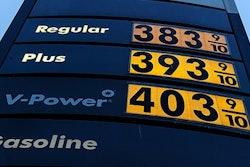
A continued decline in the truckload rate per mile index is projected to erase almost all of the gains accumulated since Q2 2021, according to research released by AFS Logistics and Cowen Research. Data shows a continued downward trend in truckload but surprising strength in LTL, while the power of general rate increases (GRIs) and surcharges prop up express parcel rates and drive ground parcel to record highs in the quarter ahead.
“Predictions for truckload and parcel fall in line with conventional wisdom, as truckload is typically sensitive to macroeconomic headwinds and record GRIs join year-round demand surcharges to drive higher parcel costs, particularly in ground,” says Tom Nightingale, CEO, AFS Logistics. “But what the index says about LTL may surprise some. Unlike truckload, LTL is expected to exhibit strength in the face of economic headwinds, supported by higher accessorial charges and GRIs, even as market conditions trend more favorably for shippers.
“Seven interest rate hikes since March of last year and continued inflation have taken a significant bite out of economic demand,” adds Nightingale. “While the index does not show a uniform decline across all modes, looking deeper shows the effects of macroeconomic conditions playing out, with carriers competing for more limited demand while searching for ways to claw back revenue.”
From BusinessWire:
- Compared to the record-high 25.8% figure of just a year ago, the index is projected to be 11.2% in Q1 2023, an 11.6% year-over-year (YoY) decline. Inflation-driven cost increases, relatively high fuel costs and shipper pricing power are expected to threaten truckload carrier profitability in 2023.
- In Q1 2023, the LTL rate per pound index is projected to reach a new high of 66.5% above the January 2018 baseline, a 1.1% QoQ increase and 20.4% YoY increase.
- The ground parcel index for Q4 2022 shows the strength of higher effective accessorial charges. Despite a quarterly decline in average billed weight per package, an 8% increase in average accessorial charge per package drove overall quarterly growth in the cost per package. In Q1 2023, the rate per package index projects a record high of 34.9% above the January 2018 baseline, compared to 27.7% the previous quarter. This anticipated growth is fueled by continued accessorial charges, fuel surcharges that will remain moderately high and record-high GRIs, which are typically “stickier” or more resistant to the impact of shipper negotiation and discounting, in ground than express parcel.
- The express parcel rate per package index is expected to increase in Q1 2023 to 2.7% above the January 2018 baseline, up 1% QoQ and 5.9% YoY. This comes after a higher-than-expected cost per package in Q4 2022, attributed to a drastic increase in average billed weight per package of 12.5% in October 2022, which, together with a 1.1% QoQ increase in the average zone, lifted the entire quarter.
“While current market conditions are more favorable to shippers looking to renegotiate after extended rate hikes, capitalizing on that and actually finding relief is no guarantee,” says Kevin Day, president, LTL, AFS Logistics. “The nature of the LTL market means shippers must enlist the help of an advocate and proactively seek out those opportunities, considering the prevalence of individualized pricing and the need for shippers big and small to stay vigilant in monitoring freight costs.”


















